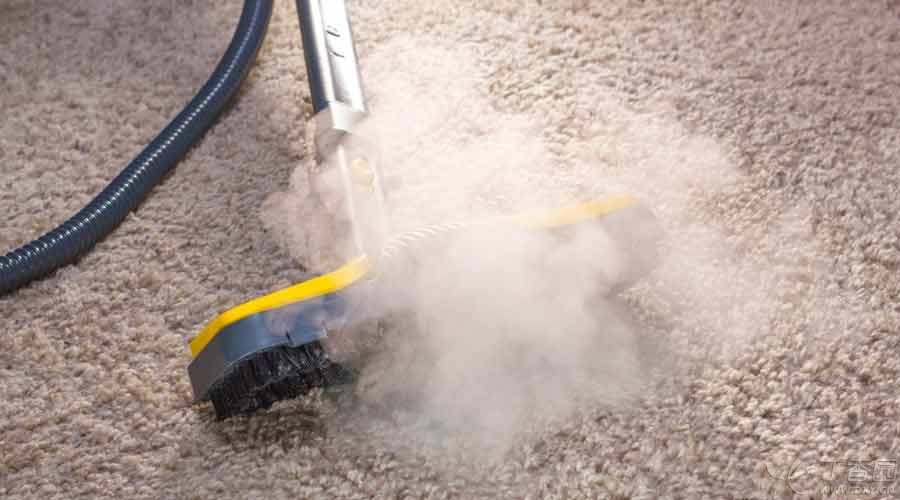
After the Spring Festival, the pace of this spring is not far away. Pollen outside is easy to make people allergic. Is the home safe? This is not the case.
Do you sometimes have inexplicable allergies even if you stay indoors? Be careful! Allergens such as mold, dust and pet dandruff are hidden in every corner of your home, especially in places you never think of. Let’s look at the top ten allergens that are easy to ignore in your home.
1. Potted plants
Take a closer look at the plants you grow in your home. Mould, spores, etc. can grow in flowerpots and then spread to the surrounding ground.
In order to reduce these possible molds as much as possible, plants kept indoors on weekdays should pay attention to cleaning up dead leaves, put a plate under the flowerpot to pad, and also pay attention to the amount of watering to prevent molds from multiplying in excess water.
Step 2: Pets
Pets are very common allergens, but pet hair is not the culprit. The real problem is the protein in pet urine, saliva and dead dandruff that fall off their bodies, which is transmitted through the air and then scattered on carpets, furniture and beds at home.
Don’t let pets near your bedroom will help. In addition, clean frequently, use vacuum cleaners more, and remember to wash your hands frequently after playing with pets.
3. Carpets and mats
Carpets or cushions can decorate the room, but they may also bring unexpected problems.
Because dust will accumulate on it, and then they will become the feeding place for dust mites. Mite bodies and dust mite excreta are the notorious indoor allergens.
In order to reduce the occurrence of similar problems, you can use vacuum cleaners with high-efficiency air filtration devices, or simply don’t lay carpets.
4. Books
Your spiritual food may also be a delicacy for pests. The dust in the book is an excellent hiding place for mites, mold, spores and book lice.
If you find that reading can cause allergy, try to remove dust from their surfaces regularly or put the books in the cabinet.
5. Furniture Decoration
Fabric furniture is warm and comfortable, but it also provides a living place for dust mites. You can use a vacuum cleaner to clean it, so as to reduce dust accumulation and prevent allergy.
Furniture stored in humid places like basements may also contain mold and spores, which can be dehumidified by dryers.
People who are allergic to dust mites and mold should choose leather, plastic or other furniture with smooth surface instead of heavy fabric furniture.

6. Bedclothes
Eight hours of sleep every night will leave a lot of dandruff on the bed, which will also attract mites.
Mites do not like dry and direct sunlight environment. Therefore, attention should be paid to the clean environment of the bedroom, more windows should be opened for ventilation, and indoor air circulation and dryness should be maintained.
Regular cleaning, sun exposure and replacement of bed sheets, mattresses, duvets and pillows should also be dusted regularly.
7. Plush toys
If your child is allergic to dust mites, those pleasing plush toys will aggravate their symptoms.
Of course, this does not mean that you should not touch them at all, so you can look for those toys that can be washed by machine, clean them once a week, and then dry them completely or dry them in the sun.
If your child’s favorite toy happens to be unwashable, you can choose to expose it to the sun regularly.
8. Bathroom
Mouldy tiles in bathrooms are not uncommon. This is the [masterpiece] of mold spores. They like to grow in warm and humid places. They especially like to grow in hidden places, which will pollute walls or floors.
In order to control mold, the best way is to keep the bathroom dry and clean. Not only should the accumulated water in all parts of the bathroom be disposed of in time, but also the exhaust fan should be turned on when taking a shower. The floor should also be cleaned regularly.
9. Kitchen
The kitchen can be said to be the favorite place for mold. The accumulated water in the refrigerator needs to be treated regularly, and once there is water residue, it means that it is easy to mold. In addition, all sanitary dead corners in the kitchen need to be cleaned frequently to prevent the potential threat of various allergens.
10. Air conditioning
There may be many allergens such as mites and mold on the air-conditioning filter screen. With the air supply of the air-conditioning, the air-conditioning filter screen should be cleaned regularly.
What should I do if I am allergic?
In severe allergies, it is not enough to avoid allergens alone. Fortunately, we have many effective over-the-counter and prescription drugs to choose from. It is recommended to use drugs under the guidance of doctors.
Some over-the-counter non-sedative antihistamines, such as loratadine (trade name: Kairuitan) or cetirizine (trade name: Cetirizine), can effectively control sneezing, eye itching and runny nose, but they are not very effective for nasal congestion. If you do not have nasal congestion symptoms, you can try the above drugs first.
Use sedative antihistamines with caution, such as diphenhydramine, which is prone to drowsiness and leads to inattention. It is best to take them before going to bed. There is evidence that people who use these drugs for a long time, especially the elderly, can aggravate memory loss.
If you want to inquire about more drug instructions, you can download [Doctor Clove] App on your mobile phone to search for detailed information about related drugs.
Clove Garden is exclusively authorized and cannot be reproduced without permission.
